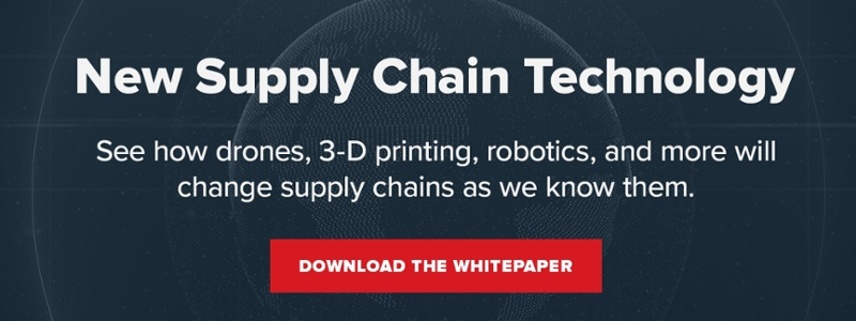
Supply chain management is the key to success in every business- retail, service, and manufacturing. Anyone well-versed with logistics will testify about nightmarish situations when a container, freighter or personnel cannot be located due to lack of adequate tracing tools. Such scenarios make it imperative that every stakeholder in supply chain industry and management utilize benefits offered by the Internet of Things (IoT).
Understanding Internet of Things
Internet of Things can broadly be described as connecting small and large devices through the Internet. Such connectivity enables them to be controlled, tracked and traced easily by anyone who has authorized access, even from a remote location. Everyday examples of IoT includes smart-phones that can be tracked and traced when misplaced or stolen, refrigerators and air conditioners whose temperatures can be adjusted remotely. The same principle holds good when it comes to the large logistics and supply chain industry.
IoT, Logistics, & Supply Chain Management
Logistics and supply chain management is prone to various natural and man-made vagaries. These include climatic conditions, power outages for any reason, traffic snarls, port congestions, labor strikes at airlines operating freighters and vehicle breakdowns, among others. Businesses that have shipped cargo or awaiting delivery stand to lose heavily if their consignment is delayed.
Blasphemous volumes of perishable products like foodstuff- are inadvertently lost due to poor or inadequate logistical support. Food and Agriculture Organization of United Nations (FAO) estimates that one-third of food produced worldwide is lost or wasted, partly due to faulty or insufficient supply chain. An FAO report states, mere 25 percent of the lost and wasted food would be sufficient to feed all the hungry and undernourished people of the world.
Other common items lost or damaged in supply chain include electronics, garments, and medicines. Losses and damages of these goods occur due to lack of proper warehousing facilities, faulty transport, climatic conditions, and delays.
There are also examples of arms and ammunition falling into the wrong hands due to logistical blunders.
Such losses can prove very expensive not only regarding value but also death and destruction wrought to human life and infrastructure.
Temperature Control
Temperature control is essential when handling reefers, freighters, and cold storages. Massive amounts of food are lost annually due to improper cooling temperatures. The problem is more pronounced with reefers sent to foreign countries. Often, handlers at the ports fail to connect power causing perishables to rot. Similarly, cold storages also have to maintain proper humidity and temperatures to ensure food consignments remain fresh. With IoT, logistics providers can accurately track the temperature of reefers, freighters, and cold storages and check if they are maintained at desired levels. They can alert handlers to take immediate action, should any aberrations in temperature be detected.
Delivery Schedules
Logistics and supply chain depends on timely delivery to the intended consignee. A logistics company serves as the intermediate consignee; once a shipment is handed over. Upon receiving the consignment, they have to ensure its timely delivery. Though every logistics provider tries to deliver consignments on or before schedule, their efforts are impeded in different ways: they are unable to track the location of a container or truck and schedule its loading on freighters for timely delivery. A vehicle could be caught in traffic snarls or delayed for any other reason. The absence of such tracking information can prove frustrating to the consignee, consigner, and supply chain managers. IoT makes it possible to pinpoint the location of a vehicle or cargo and schedule its loading or delivery.
Fleet Maintenance
Timely maintenance of vehicles and knowing whether there are any breakdowns on any particular route is of great significance for logistics providers. Fleet management can prove cumbersome, especially in peak seasons when there are large movements of goods. Through IoT, it is possible to create maintenance schedules for the fleet and ensure adequate trucks and freighters are available on any given day for seamless cargo movement. Roadside breakdowns of vehicles carrying shipments can be tracked with IoT. This enables getting the vehicle repaired quickly by contacted mechanics or nearest garages. Keeping tabs on a fleet is vital for every logistics provider.
Dangerous Cargo
IoT can play a major role in the transportation of dangerous cargo such explosives, gases, corrosives, radioactive material, flammable liquids and solids, oxidizers, bio-hazardous, toxic and contaminating substances. Such goods require excellent handling, from the time they are received to storage and delivery. IoT enabled tankers and containers facilitate real-time tracking of dangerous cargo. Logistics providers can divert hazardous cargo to safer routes and minimize chances of accidents. It also enables supply chain managers to detect leaks and spillages and take immediate measures to prevent damage to the environment, loss of property and life. IoT means you can also ensure explosives do not fall into the wrong hands. Safety of explosives and other dangerous cargo is assuming greater significance in light of terror attacks perpetrated by radical groups worldwide.
Cost of IoT
IoT does not significantly increase operational costs of any logistics company. It facilitates better supply chain management by providing real-time tracking of cargo. This translates into excellent customer service as logistics providers can provide real-time data to shippers and consignees. IoT also helps in reducing the environmental impact of logistics and supply chain management, among other benefits.
Astute fleet and personnel management through IoT can save money on vehicle repairs and gasoline while enabling timely pickups, proper warehousing, and delivery.
Hurdles to IoT
A major snarl that IoT in logistics and supply chain management encounters is poor Internet coverage in various foreign countries. While it is possible to track consignments, control warehouse, manage fleet and staff by IoT in countries that have higher rates of Internet proliferation, the scenario changes drastically when it comes to locations where connectivity is limited. For example, IoT is barely used in a country like India despite the presence of several logistic companies. This is because internet connectivity in India remains patchy.
To Sum It Up
IoT for logistics and supply chain management is here to stay. In fact, success and profits of logistics and supply chain providers will depend upon how rapidly they can implement IoT in various areas of their operation. Customers will tilt towards logistics providers that can provide real-time tracking rather than occasional updates of consignments. IoT will enable logistics and supply chain management to improve efficiency, environment safety and make better profits. To read more about emerging technology in the supply chain look to Kenco's eBook on the subject. Thanks for reading!



